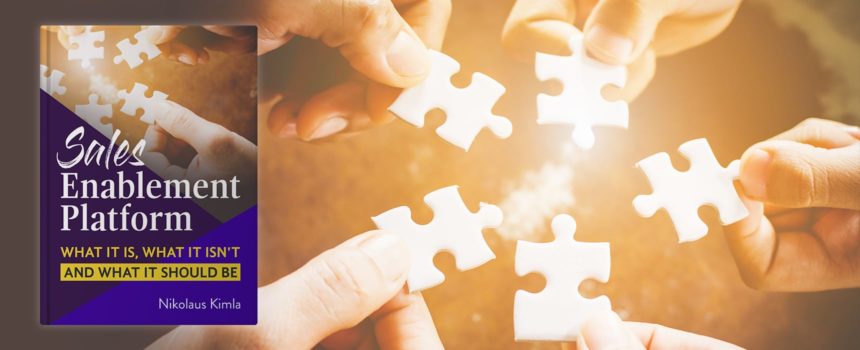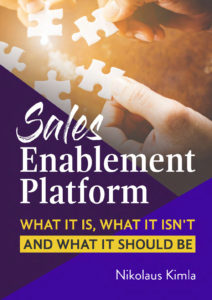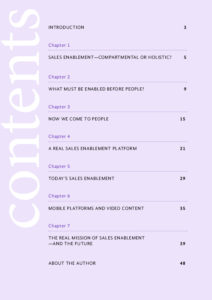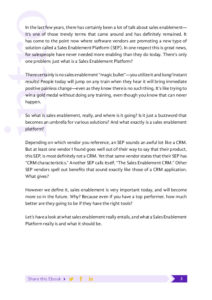In the last few years, there has certainly been a lot of talk about sales enablement—it’s one of those trendy terms that came around and has definitely remained. It has come to the point now where software vendors are promoting a new type of solution called a Sales Enablement Platform (SEP). In one respect this is great news, for salespeople have never needed more enabling than they do today. There’s only one problem: just what is a Sales Enablement Platform?
There certainly is no sales enablement “magic bullet”—you utilize it and bang! instant results! People today will jump on any train when they hear it will bring immediate positive painless change—even as they know there is no such thing. It’s like trying to win a gold medal without doing any training, even though you know that can never happen.
So what is sales enablement, really, and where is it going? Is it just a buzzword that becomes an umbrella for various solutions? And what exactly is a sales enablement platform?
Depending on which vendor you reference, an SEP sounds an awful lot like a CRM. But at least one vendor I found goes well out of their way to say that their product, this SEP, is most definitely not a CRM. Yet that same vendor states that their SEP has “CRM characteristics.” Another SEP calls itself, “The Sales Enablement CRM.” Other SEP vendors spell out benefits that sound exactly like those of a CRM application. What gives?
However we define it, sales enablement is very important today, and will become more so in the future. Why? Because even if you have a top performer, how much better are they going to be if they have the right tools?
Let’s have a look at what sales enablement really entails, and what a Sales Enablement Platform really is and what it should be.


































Comments